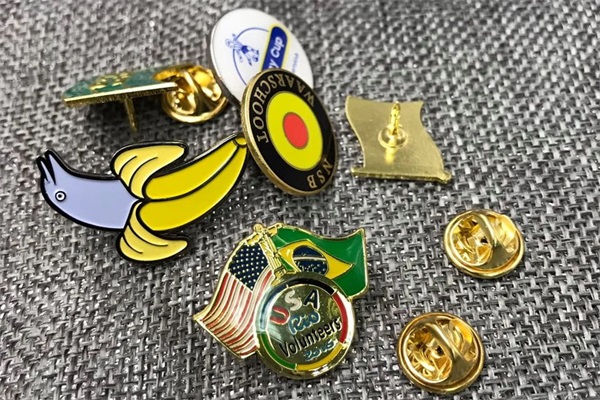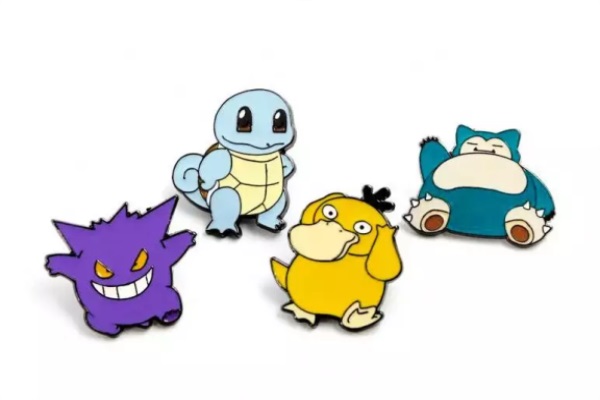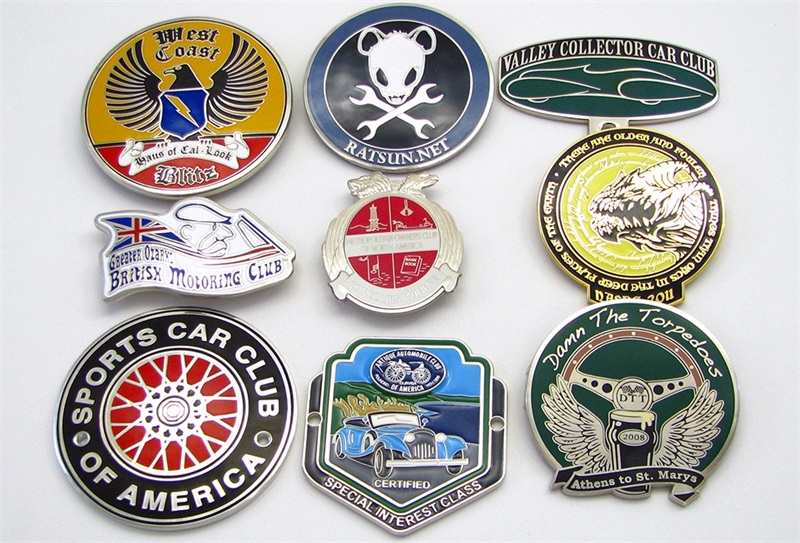What are the differences between soft enamel and hard enamel? This is one of the most common questions in the custom badge creation industry. Cloisonne is an ancient technique used in creating custom badges. The general idea in cloisonne is to use ridges on the surface of the metal item to separate and hold applications of colored enamel which is cured and finished as needed. Here at Morning Craft, our custom badges can be created by using either soft or hard enamel. The cloisonne process is adjusted to accommodate every type of pigmented material.
What is soft enamel?
Soft enamel is a viscous paint that will be cured at temperature. The custom badges will be stamped to create the recessed area or ridges that need to contain free-flowing enamel relatively. The right shapes custom badges will be plated with one of the metal finishes such as gold. Silver, nickel, or copper look which enamel paint will be applied. The custom badges will have a fast trip through an oven at a fairly low temperature cures the enamel. The special feature of soft enamel badges is that the level of the cured enamel will remain below the metal ridges, which offers a textured feeling and look. Custom badges made using this kind of enamel can be finished with an epoxy dome that protects and smooths.
In this enamel, the bowl is not filled and a valley is allowed to form in the liquid enamel. This result in a hard surface that you will feel dip and go up to the edges of the piece and some interesting shadows and reflections.
What is hard enamel?
Hard enamels are created from solid pieces of resin or glass which are cured under much higher temperatures than soft enamels. Custom hard enamel badges start out similar to soft enamel. But hard enamel involves the process that follows.
In hard enameling, resins of the chosen color are added to the right parts of the badges and cured one at a time. Then, each custom badges are polished or finished to bring it down to the level of the custom badge’s exposed ridges. At last, the custom badges are electroplated before polishing. In the application of enamel, we begin with a base that is like a bowel for the liquid enamel. During hard enameling, the bowl is filled to the brim and cut off cleanly, creating a flat surface that is clean and has cohesive reflection under direct light.
Design for soft Enamel and hard enamel badges
Designs for soft and hard enamel badges are the same. Here at Morning Craft, you can do the same color, details, and effects on either which kind of enamel. The only difference is the feeling and shadowing or reflection on their appearance. Customers usually choose soft or hard enamel according to their aesthetic preference because some designs work better than others. Contact us today to try soft and hard enameling on custom keychains cheap, custom badges, challenge coins, lapel pins, custom medals no minimum, custom tie clip and cufflinks, and more. We offer a free design which means you can get to see both options before you make a decision.
Soft Enamel and Hard Enamel, Which method is better?
Both these 2 kinds of enamel have their own advantages and disadvantages. When making a decision, you would better consider the important issues:
Cost
Custom metal badges tend to cost less than hard enamel because hard enamel needs a more labor-cost production process which is unavoidable.
Detail
Details for soft and hard enamel are typically small. Soft enamel custom badges are able to display cleaner and more detailed. Hard enamel badges are polished several times. Their exposed ridges are more rounded and spread out. Custom badges created by modern hard enamel processes reflect closely the results achieved by classical cloisonne techniques. Although the well-designed and produced soft enamel badges are attractive, they are not as elegant as their hard enamel counterparts.
Durability
Compared to soft enamel badges, hard enamels are more scratch resistant and durable. However, soft enamel badges can be covered in epoxy which protects them against damage.
Texture
A bare enamel badge has a texture that results from the difference in height between painted portions and metal ridges. As the areas which are colored on hard enamel badges are overfilled and then polished after curing, a smoother feel and look results. When soft enamel badges are covered by epoxy, the smoothness of the surface takes the place of the usual texture.
Both soft and hard enamels can to used to create attractive and high-quality custom badges. Understanding how the process works and the advantages of each will help you make the appropriate choice easily.



